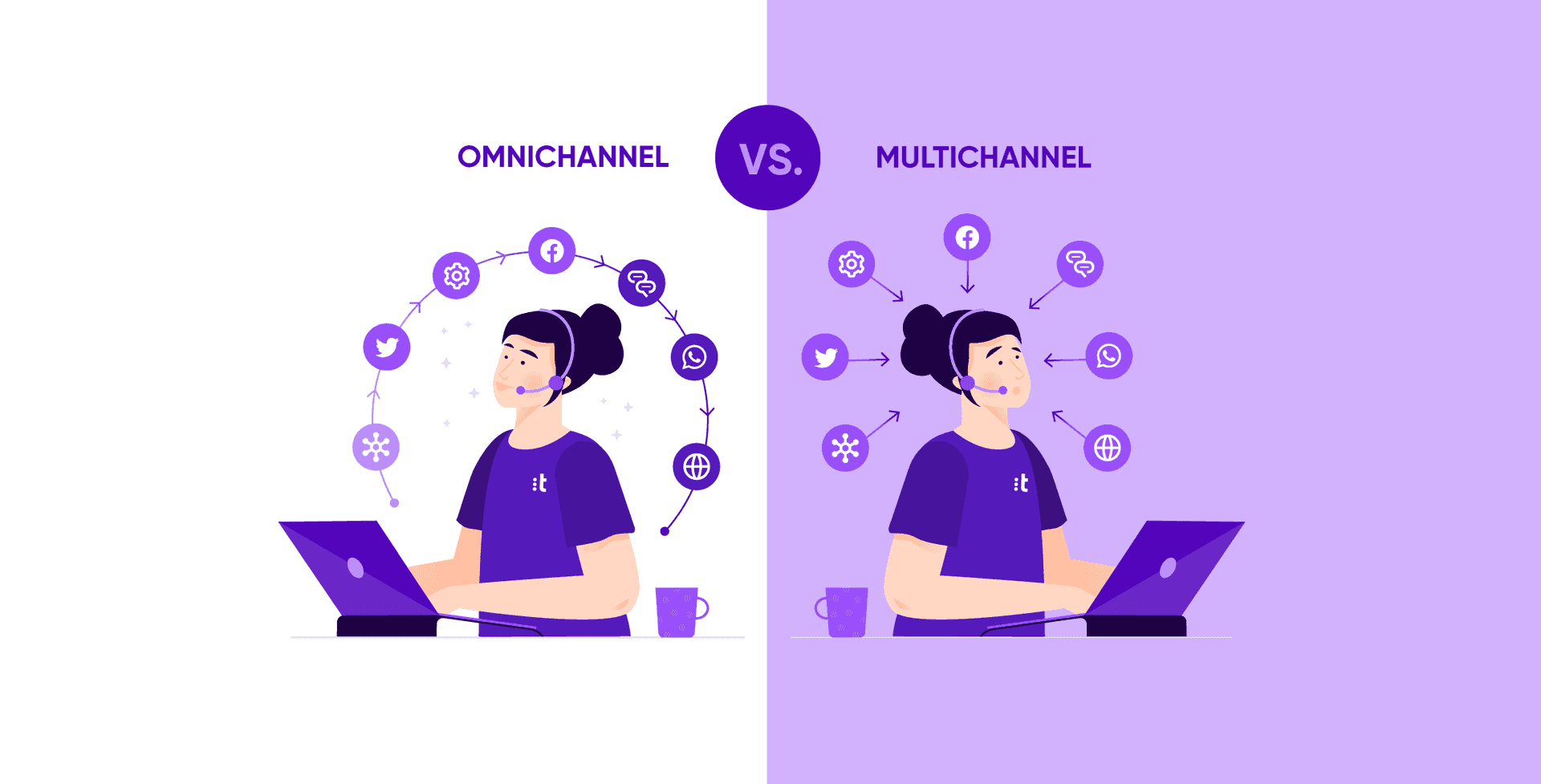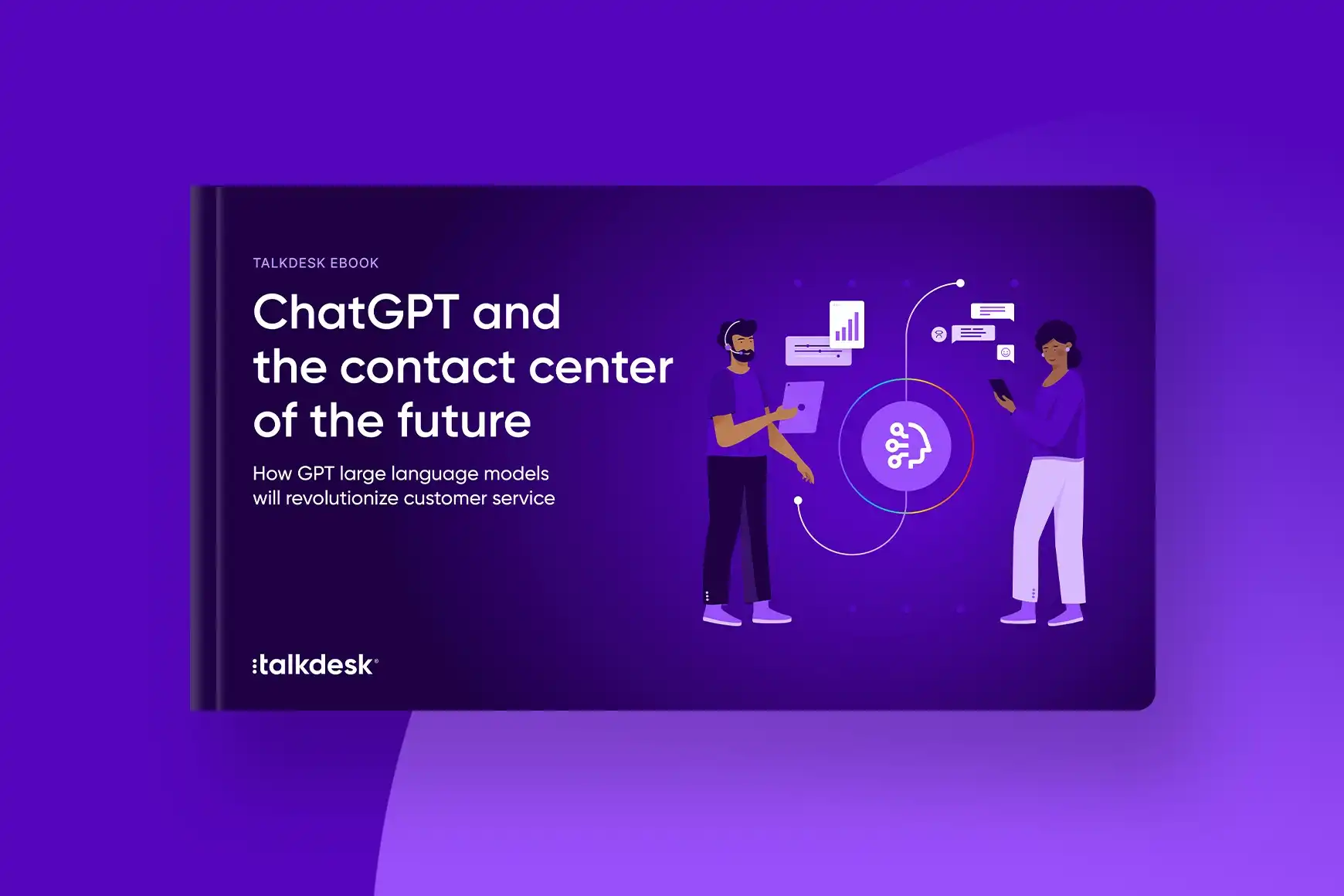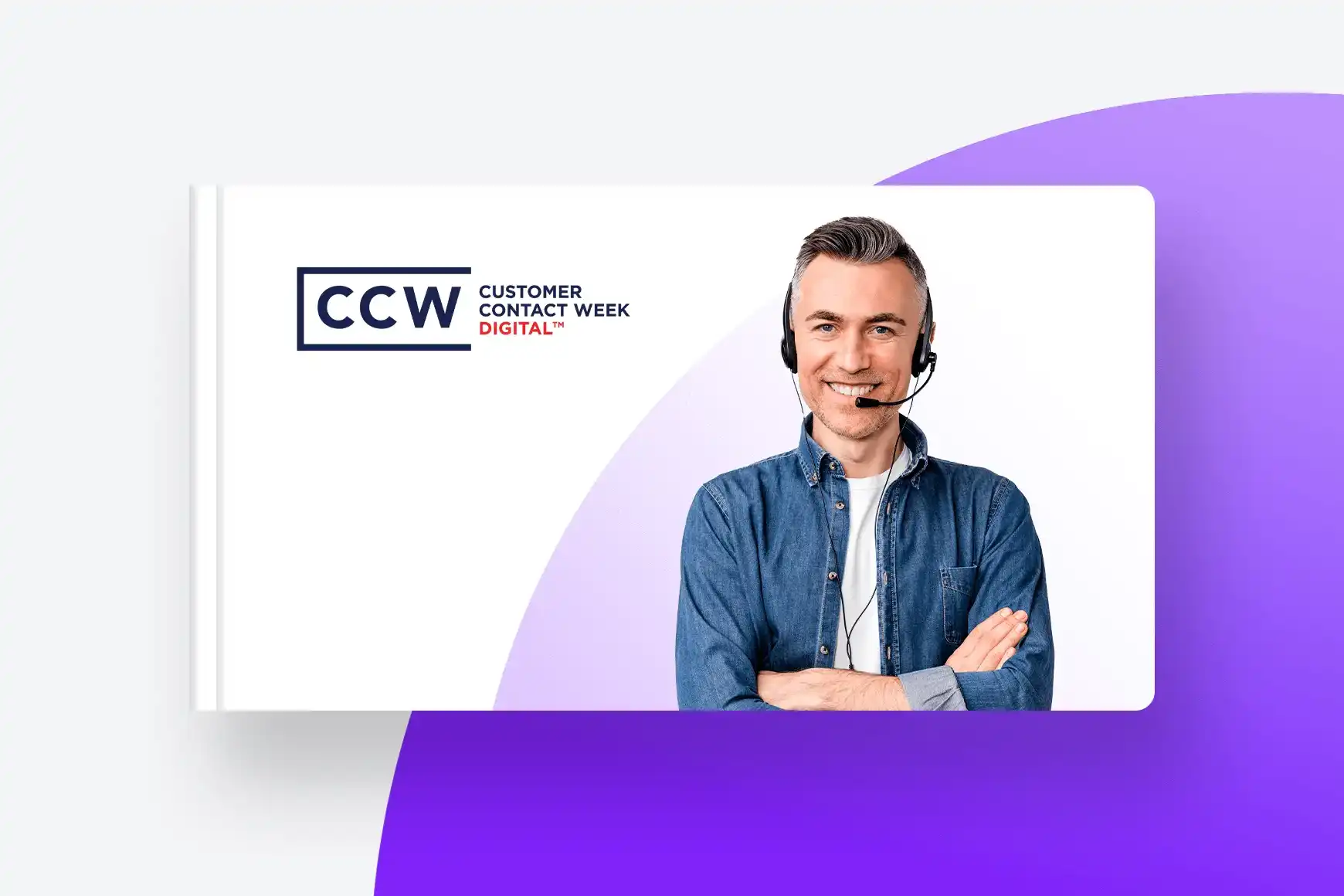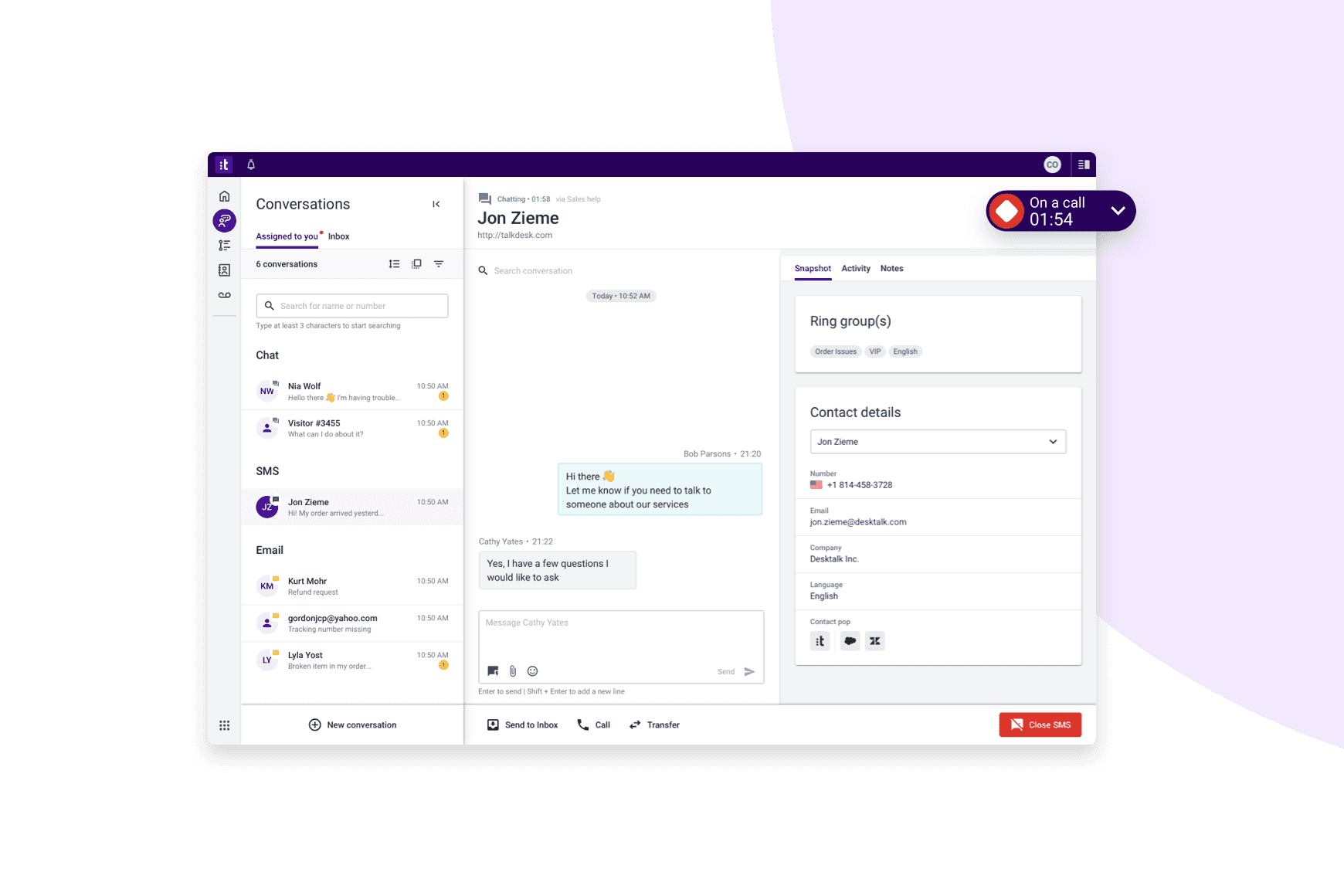What’s the difference between omnichannel and multichannel customer support?

By Celia Cerdeira
0 min read

Modern businesses are required to keep up with the growing needs of customers everywhere, but providing an outstanding customer service strategy is a moving target. With our rapidly-evolving business landscape, customer expectations continue to look different with each passing year. While we can’t form your customer service strategy, we can start by defining the difference between omnichannel and multichannel support.
There is a great deal of advice out there about how to differentiate your company’s support—some brands even round up customer service excellence tips once a week! There are numerous lists of best customer service companies, and B2B companies that offer customer service consulting.
With so many choices and conflicting methodologies, it’s hard to know which direction to take your company in. Sometimes, it’s difficult to even figure out the terminology, such as the difference between omnichannel and multichannel customer service. Understanding the differences between both is crucial to create the right strategy.
What is omnichannel customer service?
Omnichannel support is a comprehensive customer service approach designed to provide seamless assistance across various channels and devices based on customer preferences. By removing barriers and offering a unified experience, businesses can deliver exemplary end-to-end customer support.
Omnichannel customer engagement includes factors that many may not initially consider as part of a customer engagement strategy. An omnichannel approach may not only include phone calls, and online interactions with contact centers and chatbots, but also digital channels such as online resources, social media posts/comments, app interactions, and more. An omnichannel strategy can include any or all of these aspects. The more channels it includes, the better a brand will facilitate customer satisfaction.
Why is omnichannel support important for your customers?
Customers today expect a seamless experience across platforms. Many of today’s brands do this well, and set the bar high. A given customer could engage with a business through various digital channels on a phone or computer, and over calls—sometimes all about the same transaction. Omnichannel customer service ensures that your audience has a consistent experience across all of these platforms.
Consumers expect an omnichannel customer service strategy.
Because of today’s digital era, customer expectations for a cross-platform experience are higher than ever before. So, a brand without tactics for omnichannel customer engagement will likely lose opportunities. In addition, failing to build out omnichannel customer service decreases customer satisfaction, possibly leading to more churn and weaker customer loyalty.
Benefits of omnichannel customer service.
Obtaining greater customer insights.
With omnichannel customer service, your business will be able to collect more detailed customer data. For example, simply operating a multichannel strategy or using only one or two channels will not connect the dots between a customer’s interactions at a brick and mortar store and the same customer’s engagement on different channels, such as a website or app. Without omnichannel customer service, you will miss the insights provided by following the entire customer journey from end to end.
Revenue increase.
Omnichannel customer support also makes it easier for your business to provide customer self-service options. Because your business will already be building out multiple channels to create a successful omnichannel strategy, your teams will be in a good place to add new customer self-service options as well. By adding these features, your buyers will be more likely to complete a sale without involving the sales department, leading to accelerated purchases. In addition, self-service channels free up your CX and sales departments to direct their focus on more substantial accounts and deals, leading to bigger wins for the whole organization.
Lower resolution time.
Issues get resolved quicker when an organization has multiple communication channels. An omnichannel approach can keep records of any customer interactions or purchases across channels and produce tailored responses to that customer’s specific needs.
By pulling all customer touchpoints together into a unified experience, companies can respond to customer inquiries with as little trouble as possible. With lower resolution time comes more customer satisfaction and better agent productivity when resolving issues.
Customer journey simplified.
With an omnichannel support strategy, customer service agents and self-service tools can pick up wherever the customer left off on their customer journey. It’s beneficial for your team and any of your automated customer experience tools, such as artificial intelligence (AI) powered features, to know where a customer is in their journey. This knowledge leads to more specific customer support and personalized interactions.
Furthermore, an omnichannel approach leads to better sales/marketing efforts. With better message targeting, sales/marketing can more effectively reach customers who have not made a purchase yet, but are conducting research across platforms. In addition, this approach can improve remarketing efforts to current customers exponentially, which, in turn, increases revenue and customer loyalty.
Increase the productivity and job satisfaction of your customer agents.
Customer service agents often deal with customers who have already communicated with other channels, such as over other calls or online. With omnichannel customer service, agents can immediately pull up information on each customer and understand which touchpoints have already occurred.
This seamless experience between channels will save time for both the customer and the employee, leading to better customer agent productivity. Context also leads to better quality conversations and less frustration for the customer and the employee, creating a more satisfying work environment for your customer agent.

EBOOK
ChatGPT and the contact center of the future
Find out how this exciting new technology will change everything from conversational AI to the role of the contact center agent.
What is omnichannel customer support?
An omnichannel approach to customer service means seamlessly meeting customers on the channel or channels that they prefer at every level of interaction with your organization. Omnichannel support, like its multichannel counterpart, involves companies offering customers many ways to interact. But the main differentiation: omnichannel customer support takes a holistic view by attempting to create a seamless customer experience across channels.
Omnichannel customer support also leads to more customer satisfaction and brand loyalty. It means that support agents or helpful tools, such as AI-powered chatbots or mobile apps, can gain customer context for queries. When a customer interacts with a brand on a platform and then chooses to continue on another, an omnichannel customer experience means that they will pick up right where they left off on the previous channel.
What is multichannel customer support?
Multichannel customer support, on the other hand, generally means that customer support is provided across more than two channels. A company that has multichannel support offers customers multiple, distinct ways to interact with them. This enables businesses to meet customers on their own level.
Multichannel customer support is actually a less encompassing approach than omnichannel. For instance, multichannel customer support might offer customer service on a few different channels, but the customer data is not seamlessly available from the channels.
Because of this, a customer who starts at a certain stage of their buying journey on one platform will have to start over, if they switch to another. The main goal of multichannel customer support is simply adding more channels. But this goal does not truly focus on fostering a seamless customer experience, as it lacks the data and tooling to allow a customer to leave off in the middle of a process on one platform, and then pick up where they left off on a new one.
What are the downsides of a multichannel approach?
Multichannel support is still a tremendous advantage, regardless of the drawbacks. The problem with multichannel support is that teams can become siloed. The phone support team isn’t in great communication with the email support team, so customers may get a totally different experience when they interact with each team. This can be jarring and present a disjointed front to customers.
With a multichannel approach, a customer with a query will need to repeat themselves whenever they switch channels because the context of their issue does not travel with them as they go to a new channel. This can lead to dissatisfaction and a drop in metrics, such as Net Promoter Score (NPS) and customer satisfaction score (CSAT). After all, they are seeking to solve an issue with ease and speed, so repeating themselves when they go to different channels can lead to impatience and frustration.
In addition, multichannel approaches make it more difficult to add new channels. Instead of just tying them into current efforts, as an omnichannel approach would allow, adding new channels to a multichannel approach means that you need to start from scratch for every new channel.
An omnichannel customer service strategy allows for a cohesive, positive customer experience. Not only can customers meet you on your own level, but they can also expect exemplary service no matter where, when, or how they reach out.
In comparison to a multichannel approach, omnichannel means that all channels are interconnected. While this may seem like more upfront work for businesses, the payoff is immeasurable, as it prepares the brand for long-term success.
We see new modes of communication coming into existence with each passing year and, by setting up an omnichannel approach at the start, a company is ready for any number of new channels to get added to their plan. This readiness for digital transformation can give brands a competitive advantage and help them with their current initiatives.
What’s a support channel?
A support channel is a medium through which you can communicate with customers. Popular support channels include telephone, email, social media, live chat, video, forums, and self-service knowledge bases.
The benefits of each support channel.
Each support channel can play a different role in customer journeys, which is why companies highly benefit from omnichannel customer service. Here are a few possibilities and their benefits:
- Call, email, or message to a contact center. Sometimes it’s easiest for a customer to pick up the phone and call an agent to discuss concerns or inquiries with live humans. In addition, some call centers implement a chat system, enabling customers to direct messages, email, or text agents.
- Physical store. For many B2C companies, a physical location can be incorporated into their omnichannel customer experience. Using in-store technology to tie shopping in-store to online interactions enables brands can create a unified purchase history, in case a customer runs into issues with their product later down the road, or decides to look at more products in an online store.
- Social media platforms. Many customers interact directly with a brand over social media, such as tweeting a concern or writing a comment under a LinkedIn or Facebook post. By linking these kinds of interactions on social media back to the customer’s journey as a whole, businesses can provide contextual responses if the customer reaches out over another channel.
- Online self-service options. Some companies utilize online resources such as chatbots, virtual catalogs, and downloadable resources. By tying interactions with these resources to other customer interactions, they can assist customers better and create tailored marketing and sales opportunities.
Why is it important to provide more than one support channel?
Each support channel offers a specific type of customer communication. There are many unique instances in which the phone is preferable to text, when self-service is more useful than live chat, and so on. This makes it difficult to provide adequate service to all customers at all times if your company only leverages one support channel.
Multiple channel offerings show customers that you care about giving them options for how to interact and are willing to tailor your offerings to any level of technical expertise. Some consumers find it easier to interact with customer service over phone calls, while others appreciate the ability to use text/chat functions to communicate.
Often, this differentiation can vary, depending on technical background and generation (i.e. Millennials and Gen Z are more likely to use self-service or chat options, while Gen Xers or Baby Boomers might be more apt to call agents over the phone). In addition, it can vary depending on what is more convenient for the user at the time. By providing these options for your customers to use at any point, your brand sends the message that you are available and ready to provide excellent customer service.

REPORT
2023 market study: CX trends, challenges, & opportunities
CCW Digital’s Annual Consumer Preferences survey reveals that customer experiences are actually regressing, with brands continuing to miss the mark in areas like personalization, speed, convenience, empathy, and channel accommodation.
Best practices for omnichannel customer service.
To provide exceptional omnichannel customer service, there are a few best practices that can help businesses deliver a seamless and satisfying customer experience.
Add an AI virtual agent.
AI virtual agents can resolve simple customer queries instantly, reducing the dependence on live agents and ensuring quicker responses. Virtual agents can be integrated into various channels like SMS, chat, and social media, providing customers with the flexibility to choose their preferred channel for support.
Use AI to analyze customer-agent interactions and identify issues.
AI-driven CX analytics can provide insightful data into customer-agent interactions, helping identify potential issues. Tools like interaction analytics can transcribe conversations using AI, uncovering customer sentiment and helping businesses understand their customers better. Quality management tools analyze agent interactions to find insights that aid supervisors in coaching their agents more effectively.
Provide quick responses.
Quick response times are a cornerstone of excellent customer service. In an omnichannel approach, this means maintaining acceptable response times across all channels. Whether it’s via phone, email, chat, social media, or any other channel customers appreciate promptness. Fast responses show customers their concerns are valued, and help in resolving issues efficiently to enhance customer satisfaction and loyalty.
AI-powered tools like Agent Assist can revolutionize the way agents handle customer conversations. These tools listen, learn, and assist in real-time, helping agents respond faster and more accurately to customer queries. This not only improves efficiency but also enhances the overall customer experience.
Establish customer feedback loops.
Customer feedback is invaluable in refining your omnichannel strategy. Encouraging customers to share their experiences and using this feedback to make continuous improvements can significantly enhance service quality.
Ensure consistency in messaging.
Consistency is key. This means maintaining uniform messaging, branding, and service quality across all channels. A dependable experience helps customers build trust in your brand and enhances their overall journey.
Looking for omnichannel support solutions?
As far as customer support advice goes, “choose omnichannel” is a tip that’s not going to go out of style. It might seem like a tall order to switch away from a single channel or multichannel approach, but an omnichannel strategy will bring countless benefits in the long run. A few tips for implementing a great omnichannel strategy include:
- Assessing your current state of omnichannel maturity. Focus on three key aspects: digital customer experience, digital operational excellence, and omnichannel customer engagement. This can help you better understand where you stand and what areas need improvement.
- Deciding on a digital transformation plan. Which technologies could aid in creating a better omnichannel approach? Do you already own any tools that could be repurposed into an omnichannel strategy? Decide if your organization needs to invest in new technologies, or if existing ones can be improved upon, to create your omnichannel approach.
- Consider bringing on technology partners. Some organizations specialize in working with the customer experience and support departments to take iterative steps towards an omnichannel approach. End-to-end CX solutions also facilitate seamless transitions between channels, creating an excellent front-end experience for customers, as well as an organized back-end for customer support agents, CX teams, and other departments.
If you’re considering an omnichannel strategy for your contact center, we can help. Request a personalized demo today.

DEMO
Talkdesk digital customer engagement platform for better CX
Engage your audience at every step of the customer journey with our seamless platform that is designed to build long-lasting customer relationships.
Omnichannel support FAQs.
What is an omnichannel approach?
The omnichannel approach means using multiple channels in your customer service and linking these channels together to create a seamless customer experience. It involves creating connections between different components of a customer journey, such as downloadable resources on the brand’s website, interactions with the contact center, shopping in a physical location, participation on social media or forums, and more.
When omnichannel customer service practices have been established, it gets easier for a company to add on additional channels.
What is an omnichannel example?
As an example of omnichannel customer service, an e-commerce store might implement a login feature, which allows a customer to start a shopping journey on their mobile device, then log onto their computer and complete the transaction there.
As another example, a service provider might integrate their online chat feature with information about customers’ existing subscriptions. So when a customer reaches out to the chat feature with a question about their specific subscription, the chatbot or live agent on the other end can pull up information about the customer and immediately provide contextual responses, instead of needing to ask the customer themselves for context and wasting time and resources during the exchange.
Why is it important to have an omnichannel approach to customer service?
When they choose to offer omnichannel customer service, businesses can see increased customer satisfaction, better revenue growth, and more job satisfaction amongst customer service reps. Omnichannel customer service creates a smarter, more streamlined approach to managing customer data and providing excellent customer service experiences.
Is omnichannel support suitable for small businesses?
Omnichannel support is not only suitable but also highly beneficial for small businesses. Adopting an omnichannel customer support approach can give small businesses a competitive edge. It allows them to meet customers where they are, whether it is on social media, by email, phone, or in-person. This flexibility enhances customer experience and builds stronger relationships with customers. Plus, with the wealth of data generated from these multiple touchpoints, small businesses can gain valuable insights into customer behavior, preferences, and needs, making more informed decisions and strategizing effectively.
What industries benefit most from omnichannel support?
An omnichannel support strategy can be beneficial across a wide range of industries. Particularly, industries with high customer interaction, such as retail, e-commerce, healthcare, hospitality, banking, and telecommunications can greatly benefit from implementing an omnichannel customer support strategy. It allows these industries to provide a unified customer experience across various touchpoints, enhancing customer satisfaction and loyalty.
With an omnichannel support strategy, businesses can maintain consistent messaging and customer service across all platforms, preventing confusion or miscommunication. It also gives customers the flexibility to choose their preferred method of interaction.
Are there any success stories of companies implementing omnichannel support?
Yes! There are many success stories of companies implementing multi channel customer support strategies. For instance, Accenture, a leading global professional services company, has successfully implemented omnichannel support to provide seamless and personalized customer experiences. They have achieved this by leveraging Talkdesk to create custom dashboards, reports, and workflows that cater to their unique business needs. This has allowed Accenture to deliver differentiated customer experiences that increase brand value for their clients.







